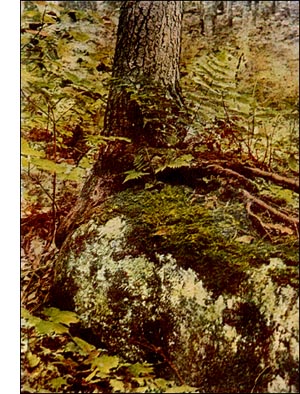Tufted Barbula Moss
 The Tufted Barbula, Barbula caespitosa, Schwaegr.
The Tufted Barbula, Barbula caespitosa, Schwaegr.Habit and habitat.-Common and variable, roots of trees in grassy places.
Name.-The specific name caespitosa, from the Latin caespes, turf, refers to the tufted manner of growth.
Plant (gametophyte).-Loosely tufted, soft, variable in size.
Leaves.-Long and narrow, more or less wavy, curled or bent in various directions and with a very narrow wavy point when dry: apex bearing a short sharp point; vein strong, yellow. prolonged beyond the leaf-blade; cells, the basal loose and transparent. the upper green and indistinct.
Habit of flowering.-Male and female flowers on the same plant (monoicous); male flowers in axillary buds, with short pedicels and two or three leaves.
Veil (calyptra).-Split up one side.
Spore-case.-Red, thin, long, egg-shaped, more or less incurved.
Pedicel.-Long and slender, twisted when dry.
Lid (operculum).-Conic, taper-pointed.
Teeth (peristome).-Basilar membrane none or scarcely visible; teeth very long, purple, twice or three times twisted.
Annulus. -None.
Spores.-Minute, greenish, translucent, smooth; mature in May and June and late summer.
Distribution.-Hills of the Southeastern States; also in Europe, Asia, Africa, South America.